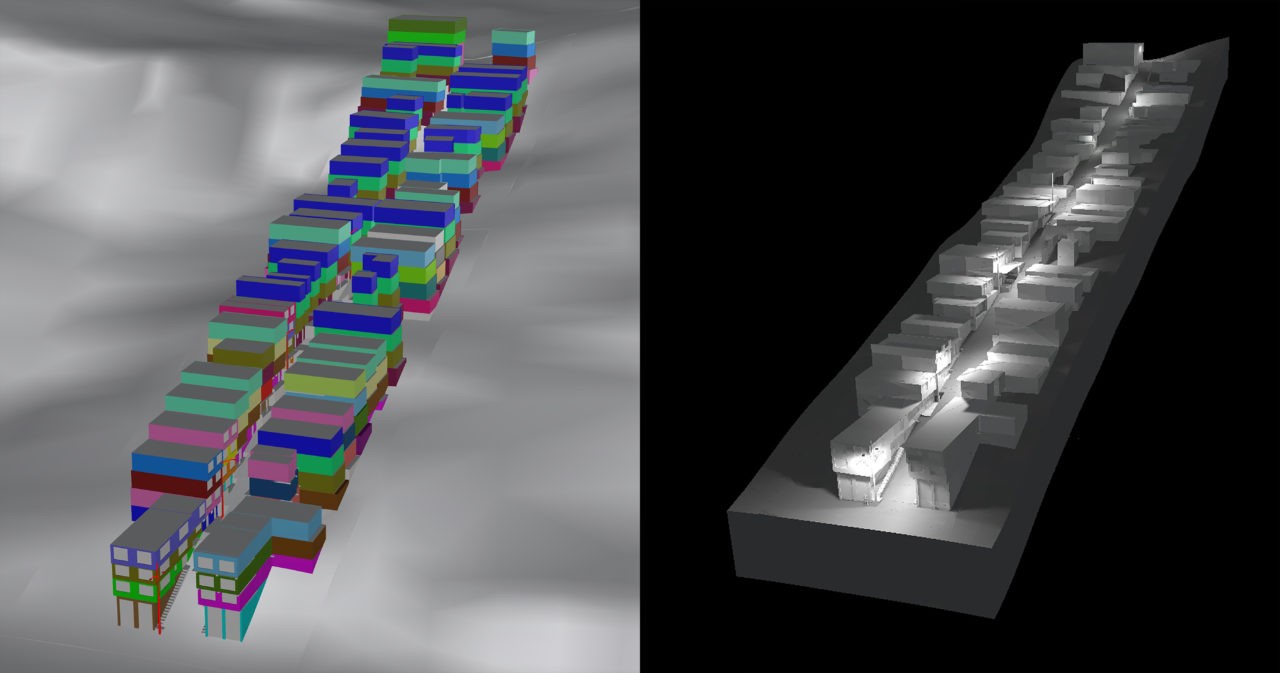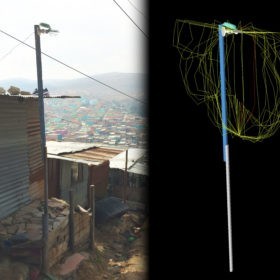
David Michael Kretzer & Michael Walczak
2020
Paper as PDF
There are a variety of reasons to support the premise that public lighting is beneficial to urban communities. At the same time, a key challenge for the provision of public lighting in informal settlements is their constant physical transformation. The aim of this paper is to evaluate the application of virtual environments (VEs) in lighting planning and policy making.
Despite the fact that VEs offer the opportunity to explore an environment by freely navigating through it, including environments that change over time, this feature is rarely taken into account in decision-making processes. A VE-based analysis tool for informal settlement lighting is presented using a case-study street in the informal settlement of Caracolí in Bogotá as its basis. The main data set for the VE scenarios was comprised of results from a household survey, spatial measurements, and participant observations as well as luminous intensity distribution curves. The household survey was used to collect time-related data on the incremental construction of Caracoli’s informal dwellings, which was then projected into past, present, and future night-time scenarios. The lighting quality of these different scenarios was systematically evaluated via lighting calculation software, revealing a variety of shortcomings caused by the current lighting approach. Based on these findings, an alternative lighting approach was developed and re-examined using lighting calculations. Finally, custom game-engine technology and GPU computing were deployed, which allowed for real-time visualisation of the different lighting scenarios and their lighting quality. This setup therefore enables fast iterative feedback loops for current and future lighting policy scenarios and the resulting lighting design. In the first instance, a VE can illustrate well how current lighting policy results in a significant delay of lighting provision in the early stage of a settlement as well as highlight the mismatch between lighting technology and the built environment during the vertical densification phases. Second, the VE is able to showcase alternative lighting technologies and policy approaches as well as the resulting lighting effects, enabling a visual comparison of different policy scenarios over several decades. In conclusion it will be argued that the dynamic VE technology appears to be a promising decision-making tool for illustrating potential planning and design shortcomings to policy stakeholders in a manner understandable to the layman.
